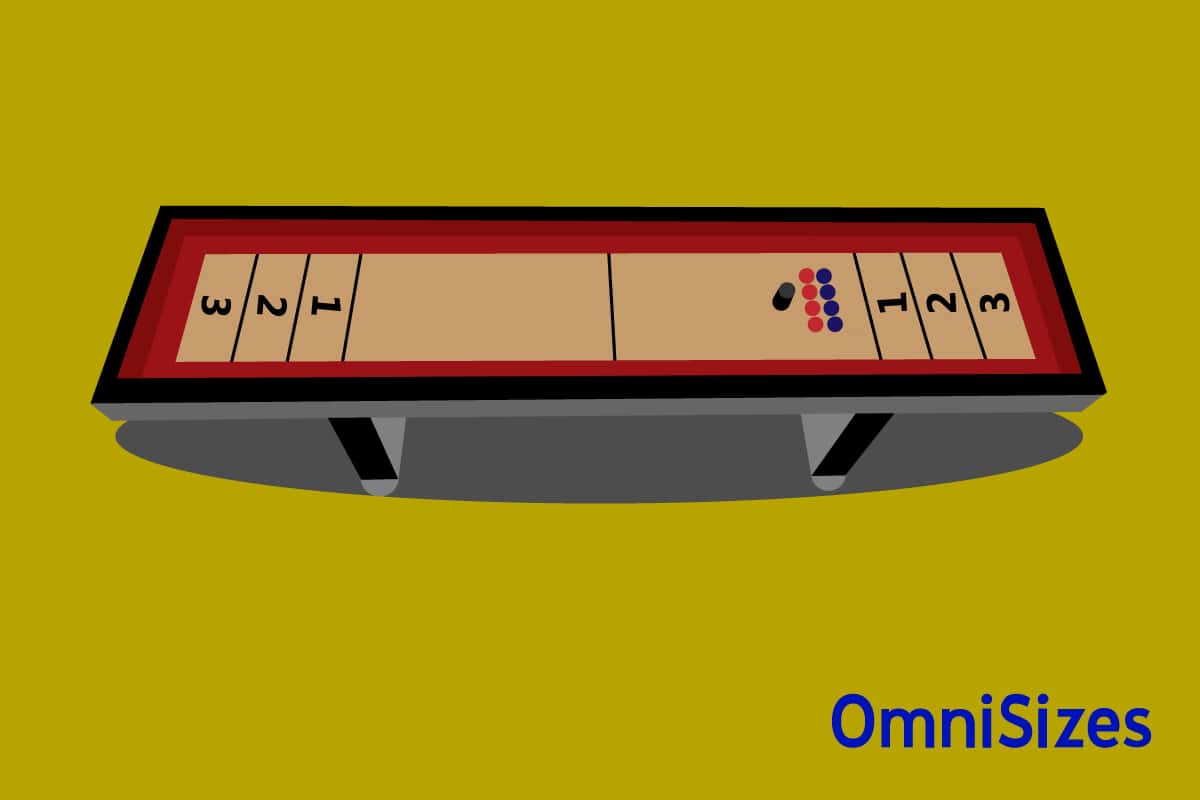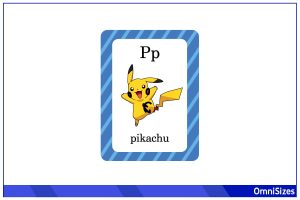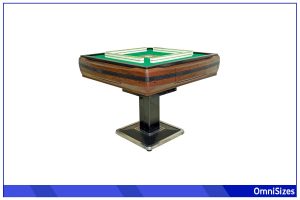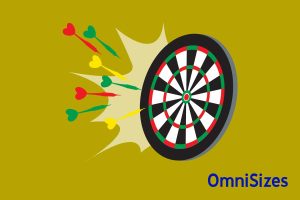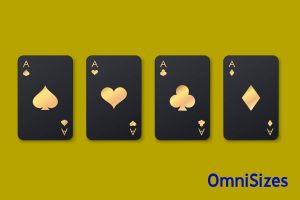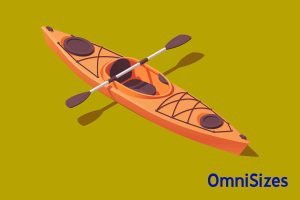Shuffleboard is a game enjoyed in homes, bars, and recreational centers that brings people together for friendly competition and fun. The shuffleboard table size significantly influences gameplay. If you want to purchase a pre-built shuffleboard table or construct one yourself, you should know all about its size range.
Standard shuffleboard tables typically range from 9 to 22 feet in length (2.74 to 6.71 meters) and are approximately 18 to 24 inches (0.46 to 0.61 meters) in width. These size variations cater to different skill levels, space constraints, and gameplay styles.
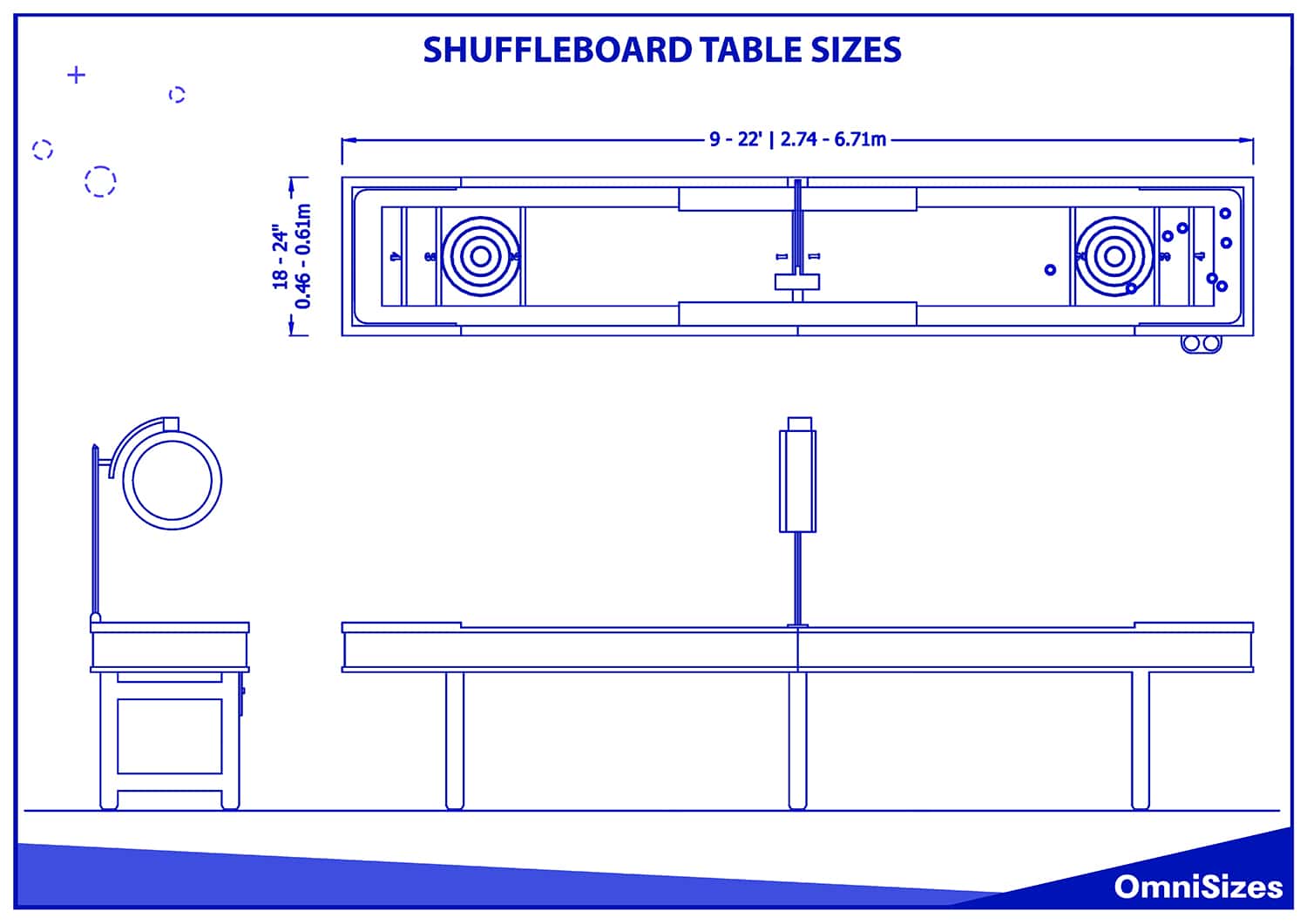
This guide will briefly go over the basics of shuffleboard before diving into shuffleboard table size ranges in more detail.
What Is Shuffleboard?
Shuffleboard is a game of skill and strategy. Originating hundreds of years ago, it has evolved into a popular indoor and outdoor game for people of all ages.
The Basics of Shuffleboard
At its core, shuffleboard involves two players or teams. Each player or team takes turns sliding pucks towards the scoring area. The objective is to place the pucks in zones that have different point values or to knock the opponent’s pucks off the board.
The game can be played in various formats, but the most common include ‘knock off,’ where players aim to score points while knocking off their opponent’s pucks, and ‘horse collar,’ a format focusing on precise scoring.
Equipment and Accessories
The equipment for shuffleboard is simple but essential for the game. The primary components include:
- Shuffleboard Pucks: Typically 8 pucks, with each player or team using 4. These are smooth, heavy discs designed to glide down the shuffleboard surface.
- Shuffleboard Powder: Also known as wax, sand, or dust, this powder is sprinkled on the board to reduce friction, allowing pucks to slide smoothly.
- Scoring Accessories: Depending on the level of play, scoring may be tracked using a simple notepad or more sophisticated electronic scoring systems.
- Shuffleboard Table: The shuffleboard table is a long, narrow surface, typically made of wood, with a smooth finish that allows pucks to glide. The ends of the table are marked with scoring zones, usually divided into sections that award different points. The table’s length and width can vary, but standard sizes are typically used in homes and commercial venues.
Standard Shuffleboard Table Sizes
Standard shuffleboard tables typically range in length from 9 to 22 feet. The most common lengths are:
- 9-Foot Tables: Ideal for smaller spaces and beginners. They provide a compact play area, making the game accessible and enjoyable in limited spaces.
- 12-Foot Tables: A step up from the 9-foot version, offering a bit more challenge while still fitting in most home game rooms.
- 14-Foot Tables: These are a great middle ground, providing a better experience for more serious players while still being manageable for home use.
- 16-Foot Tables: Preferred in settings where space is not a constraint. They offer a longer playing surface, increasing the challenge and skill level required.
- 18 to 22-Foot Tables: These are regulation-size tables used in professional tournaments and serious league play. They provide the full shuffleboard experience but require a considerable amount of space.
Top Shuffleboard Table Picks and Their Sizes
| Product Name | Dimensions (L × W) | Features |
| Atomic 9’ LED Shuffleboard Tables with Poly-Coated Playing Surface | 9 ft × 22 in | Poly-coated surface for smooth gameplay
Built-in abacus-style scoring system Pedestal legs with levelers |
| American Legend 9’ LED Shuffleboard Tables | 9 ft × 24 in | Built-in LEDs
Rustic wooden finish Bonus bowling game set |
| Hathaway BG1203 Avenger 9-Foot Avenger Shuffleboard | 9 ft × 24 in | Tournament-quality finish
All shuffleboard accessories included Padded gutters |
| Barrington Shuffleboard Multiple Styless Urban Shuffleboard Game Table Collection | 10 ft × 24 in | Bead-style scorer
Crossbar for added stability All shuffleboard accessories included |
| Playcraft Woodbridge Shuffleboard Table | 9 ft × 24 in | Thick solid hardwood playing field
Reinforced pedestal legs Multiple color options |
Indoor vs Outdoor Shuffleboard Tables
Shuffle doesn’t restrict players from playing indoors. Let’s compare and contrast indoor and outdoor shuffleboard tables.
Indoor Shuffleboard Tables
Indoor shuffleboard tables are designed for controlled environments like homes, bars, and recreational centers. They are typically made from high-quality woods such as maple, oak, or mahogany.
- Material Quality: Indoor tables often feature finer woods with polished finishes, contributing to their durability and smooth gameplay.
- Climate Control: Being indoors, these tables are not exposed to weather elements, reducing wear and tear.
- Design Variety: Indoor tables come in various styles, from traditional to contemporary, to complement interior decor.
- Size Flexibility: Indoor environments usually accommodate a wider range of table sizes, from compact to full-length tournament sizes.
Before setting up an indoor shuffleboard, make sure you have enough space for the table and for free movement along its perimeter.
Outdoor Shuffleboard Tables
Outdoor shuffleboard tables are built to withstand the challenges of outdoor environments. They are perfect for patios, backyards, or outdoor bar areas.
- Durable Materials: These tables are often made from weather-resistant materials like aluminum, composite plastics, or treated woods.
- Weatherproofing: Outdoor tables come with special coatings to protect against moisture, sun damage, and temperature fluctuations.
- Portability: Some outdoor tables are designed for easy movement and storage, offering flexibility for different occasions and spaces.
- Versatile Design: They often feature designs that blend with outdoor furniture and landscaping themes.
Outdoor tables require more frequent maintenance to keep them in good condition. Consider the impact of weather conditions like rain, sun, and temperature changes on the table.
Purchasing Guide for Shuffleboard Tables
Whether you want to purchase a premade shuffleboard that sticks to regulation rules or build one yourself, here’s what you need to know:
1. Understanding Your Needs
- Space: Measure the area where you plan to place the table. Remember to account for extra space around the table for players.
- Usage: Determine whether the table is for casual family fun, social gatherings, or competitive play.
2. Key Features
- Table Length: Ranges from 9 to 22 feet. Choose a length that fits your space and suits the skill level of the players. Make sure there’s at least 2 feet of clearance on all sides of the table for safe movement.
- Material Quality: Look for durable materials like hardwood for indoor tables and weather-resistant materials for outdoor tables.
- Playing Surface: The surface should be smooth and even. Polyurethane or lacquer finishes are common for added durability.
- Design: Consider the table’s design and how it complements your space’s aesthetics.
